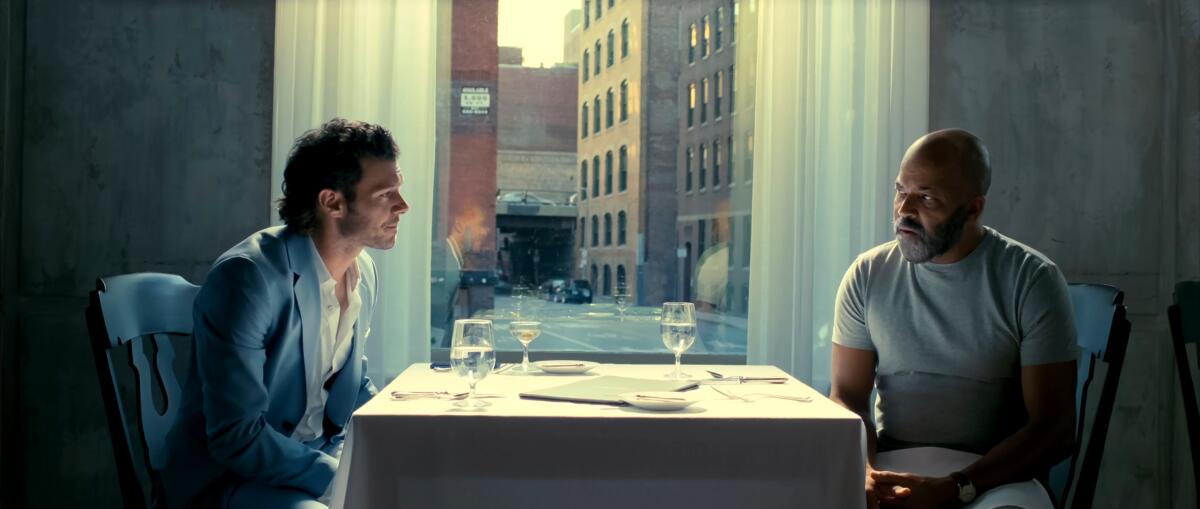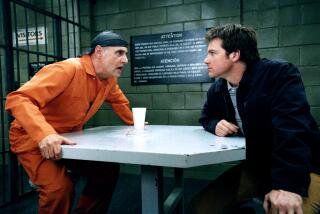How ‘American Fiction’ highlights a struggling author’s isolation

- Share via
Thelonious “Monk” Ellison (Jeffrey Wright) is a literary professor on a leave of absence struggling to sell his book thanks to a publishing industry enamored by pandering tales of the “ Black experience,” novels filled with violence and street slang. Irritated, he writes the “true story” of a convicted gangster under the pen name Stagg R. Leigh. It becomes the next big thing in publishing — something Monk despises.
In framing Cord Jefferson’s feature debut, cinematographer Cristina Dunlap wanted to highlight Monk’s isolation. A wide aspect ratio and long lenses create emptiness around Monk, and then as scenes progress, the camera moves to “pan in all the chaos happening around him.”
This was especially true for when Monk meets Wiley (Adam Brody), a hotshot executive looking to turn his book into a film. “I knew Jeffrey was going to do something brilliant walking into the restaurant transforming into Stagg, so we started on a long lens in his complete isolation and slowly dollied back and zoomed out as he enters,” Dunlap says. “When Jeffrey takes his glasses off and changes his walk and posture to become Stagg, we whip over to reveal Wiley and let Stagg come into the space.” A cooler color temperature and a feeling of dread add to the faux persona environment, each hinting at the unwanted world closing in on him.
More to Read
From the Oscars to the Emmys.
Get the Envelope newsletter for exclusive awards season coverage, behind-the-scenes stories from the Envelope podcast and columnist Glenn Whipp’s must-read analysis.
You may occasionally receive promotional content from the Los Angeles Times.










